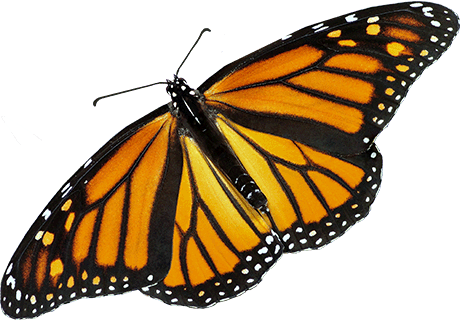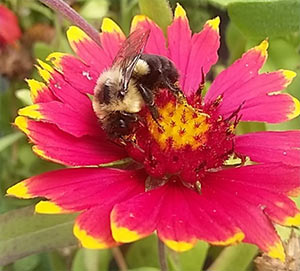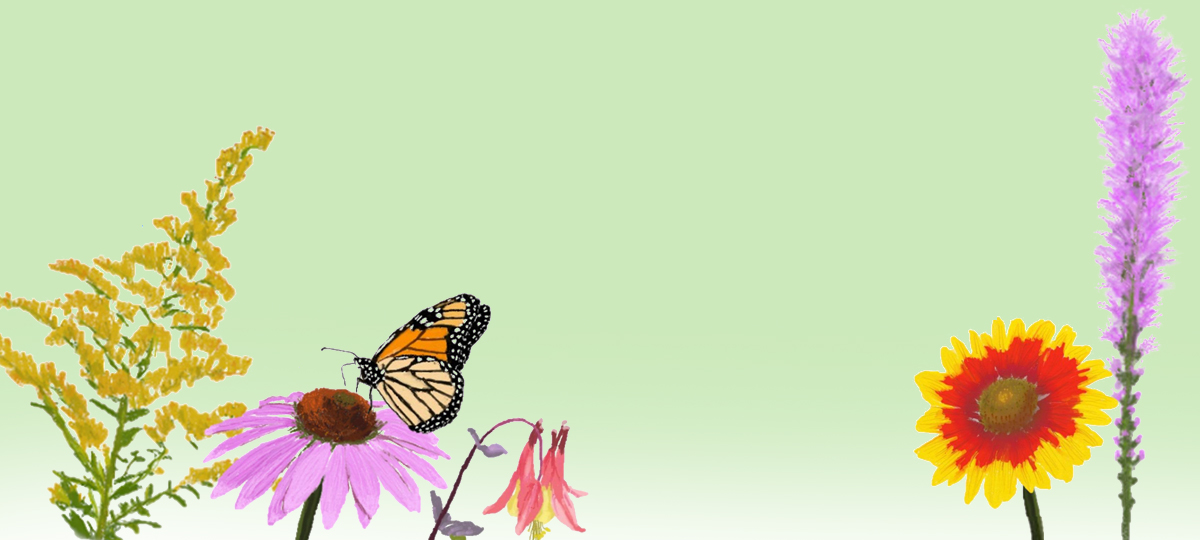
Protecting
Pollinators
Plant a Pollinator Friendly Garden

To attract pollinators, any size garden will do; whether it is a large patch of land, or a small garden bed.
Important tips for pollinator planting:
- Ensure the flowers you plant are non-invasive in your region; native species are best. Introducing invasive species to an area can have disastrous effects, like dominating the landscape by competing with native plants, or transmitting diseases that native plants or animals are not equipped to deal with.
- Avoid hybrids. Many hybrid versions of wildflowers are bred to eliminate nectar and pollen to display more showy flowers – this does not provide any sort of nourishment for pollinators.
- Plant a wide variety of early, mid, and late season bloomers for season long visits by an assortment of pollinators.
- Eliminate the use of pesticides in your garden; even some organic-approved pesticides can still be harmful
- Provide larval host plants for butterflies to encourage them to lay eggs in your garden. Then you can watch the caterpillars grow and develop into more butterflies!
Check out our Pollinator Plant Guide to find native Ontario plants that suit your space HERE.
Provide “Bee Spaces”
Many bee species in North America are solitary, meaning they don’t always live in colonies or hives, and prefer to nest in ground burrows, hollow plant stems, or dead wood. As a result of development for residential houses and buildings, pollinators are losing important areas for nesting, and need our help to provide safe spaces for their development.
To create an area for ground-nesting bees you virtually have to do nothing! Just keep an area in your yard with bare, loose soil or sand, and the bees will do the work. Wood-nesting bees prefer to make their nests in old logs, or unpainted fence posts or decking. To avoid bees burrowing into your property, provide them with a nesting box or bee hotel.
Check out our downloadable guide to find more information about creating “Bee Spaces” HERE.
Participate in Citizen Science Projects
You can be an invaluable resource for the conservation of pollinators. Scientists need your help in monitoring the North American populations of bumble bees and butterflies. Tracking the status of important pollinator groups helps to determine what actions need to be taken to protect them. By reporting a sighting and uploading a picture, you help contribute to a database that provides scientists with important information on our native pollinators.
They are always on the lookout for an endangered species sighting, so be sure to keep your eyes peeled and cameras ready! Visit these websites to submit your sightings of bumble bees or butterflies:
www.bumblebeewatch.org
www.e-butterfly.org
www.monarchwatch.org













